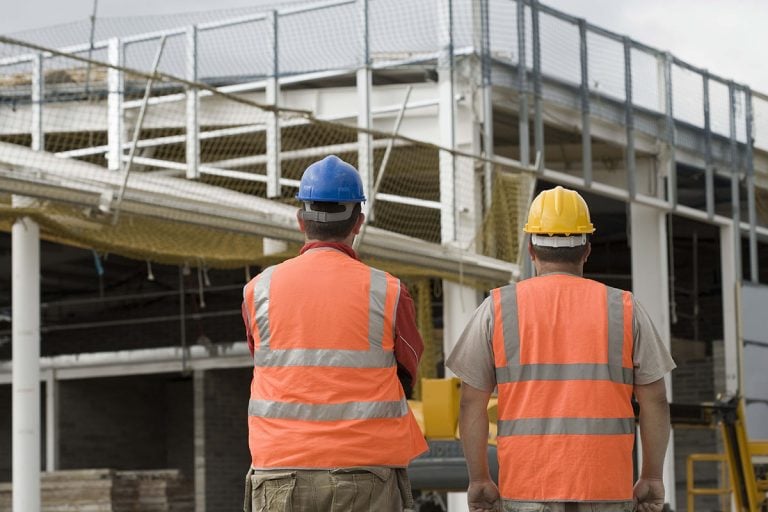Delays in construction projects are often caused by several factors, which we discussed in a previous blog, pointing out to weather disturbances, lack of communication, and poor management as some of the major reasons to experience such. However, we also mentioned about construction budget, which is an issue on the client’s side, and the productivity of the team, which depends on the crew members.
That said, did you know that these two big influences in the construction project can cause construction sabotage?
Oftentimes, the success of the project is said to be dependent on the competency of the contractor. However, there are bigger forces than him that when they decide not to cooperate, no matter how competent and experienced a contractor is, when one of these two influences acts up, he won’t be able to do so much to keep the project on track.
How Clients and Crew Members Cause Sabotage in Construction
The client or project owner should be the first person to walk the operation to succeed. But sometimes, clients can be too stubborn that they lead the project to failure instead of its success. Projects then end up badly, with poor quality, or aren’t fit for the purpose. And if they are ever completed, they finish late or over budget.
Often, the contractor, project manager, and the designers are left to be blamed. However, the problem can be a result of the client’s actions or lack of actions. Sometimes, it is the irresponsibility or lack of crew members.
This is why it is important to understand the roles of these two influences on the site and how they can avoid being the initiators of construction sabotage.
A Client’s Role in Construction
Though not present in the field, the client serves as the head of the project. He is the decision-maker, the giver of go-signals, and the financer to keep the operations going. If he doesn’t act right, the project is highly probable to fail.
The main role of the client is to see to it that the contractor and his team are able to construct at the right place and at the right time and that he can provide everything needed so a desirable outcome will be achieved. Before starting a project, clients should do thorough research on what he wants to build so that he knows how to direct his chosen team in delivering the best value and results.
But his responsibilities go beyond this. Going into details, here are the roles of the client in a construction project that should be observed:
- The first responsibility of the client is to finance the project. He should make sure that he is able to pay labor on time, according to the contract, to avoid the workers from quitting their jobs.
- The client should be able to secure permits, insurances, and other documents and requirements needed to make the operation legal.
- Demarcating property boundaries.
- He should provide legal evidence of the ownership of the property, otherwise, the construction can be shut down.
- The client should see to it that he reviews files sent to him from the field and give his approval on time for planning, building, traffic, and environmental unless obtaining these approvals is specifically included in the designer’s, project manager or the contractor’s scope of work.
- He should appoint a qualified team to work with the contractor unless they are on a design-build setup of the contract.
- He should make sure that the team produces appropriate information on time so that he knows that the ongoing activities are in accordance with the project scope and that the team is responsive to problems and queries.
- He should initiate cooperation among all members involved in the project, whether it is a design-build setup or a design-bid-build setup. He should employ a good construction project management software to make cooperation more solid in the field.
- He should pay attention to issues that can lead to delays or over budget and talk it out to key players so they can come up with countermeasures. Promptly assessing and resolving variation claims.
- The client should prevent disputes and deal with all parties fairly and in a reasonable manner.
- Penning a contract that’s legally enforceable, sets out project scope clearly, has no contradictory clauses, allocates risk appropriately, and has appropriate dispute resolution mechanisms.
- He should see to it that the quote given to him by his chosen contractor is reasonable and not too low compared to others who participated in the bid. He should also research on the prices to see to it that the budget being asked is feasible and can sustain the operation from start to finish.
- He should heighten the safety in the site to see to it that no one from his workers will be injured.
- He should periodically check on the quality of the work being delivered to him by his contractor.
- Ensure that there is a construction schedule in place and to check on the progress every now and then by asking access to the contractor’s construction project management system.
- He should also make sure that his expectations are appropriate for the project and that they are achievable.
- And most importantly, he should make the hard decision of choosing the best bidder without any bias.
Neglecting all these duties can mean the client is silently sabotaging the project.
On the other hand, it is the contractor’s duty to ensure that his client complies with his responsibilities, most especially when the client is inexperienced.
The Lack of Construction Crew Members That Can Lead To Sabotage
We’ve mentioned in a couple of our previous blogs about the ongoing scarcity of construction workers. The millennials used to hesitate to work in the field because they feel like the construction industry isn’t a place where they can grow their career since it doesn’t employ so much technology.
But even with most firms going digital and using advanced technologies like Artificial intelligence and machine learning, augmented and virtual realities, robotics, advanced construction mobile technology like Pro Crew Schedule management software, automation, and so on, there’s still a shortage in skilled workers and it’s greatly affecting the productivity in the field.
To fill in the gap, these technologies we mentioned are being used to work on behalf of the workers. However, as we mentioned before, these technologies can never replace people.
Workers get tired because they need to take on the tasks of missing members, and when this goes on for a long time, they end up quitting their jobs, hence leading to construction sabotage.
Attracting and retaining top talent is challenging, but action should be done so that delays can be prevented. Here are some ways to boost your worker population and prevent any sabotage by your crew members:
- Retain who’s remaining
To avoid losing more members of your crew, you should find ways to motivate them. Rewarding and recognizing them are two of the best strategies to retain your remaining members. By making them feel important, they will grow a sense of loyalty and will always choose to work for you despite the difficulties in filling the tasks.
- Fully utilize your construction technologies
Technology meant to provide comfort in our lives and bring solutions to problems that can’t be solved by people. Using advanced construction technologies to lighten the arduous work in the construction field will help your remaining workers become more productive. Using technology will also give the members the impression that you are prioritizing their welfare and want to help them lessen the burden on their shoulders.
- Expand your recruitment efforts
Don’t give up on finding members because no one is applying. Instead, expand your recruitment efforts by posting job ads online and joining job fairs. Prepare a catalog that will summarize why working with your firm is good. Attract them with the technologies you use and the benefits you provide. Make your vision and mission clear too so they will know if they satisfy their career goals.
- Improve your hiring and retention practices
Maybe the reason why no one is applying for a job in your firm or why you keep on losing a member is that you have poor hiring and retention practices.
Review why people left your firm and see if there are any patterns. Did they quit because you were giving them tasks that are beyond their capacity? Aren’t you paying attention to their concerns? Aren’t you paying attention to their safety? If you found common ground on the reasons why they resigned, then plan for better retention efforts.
This goes the same with your recruitment. Do people know that you are in need of new crew members? Are you giving people the right reasons so they’d apply? Are you offering a reasonable wage rate?
Additionally, consider cross-training workers. This will provide your workers with broader skills and will give them the impression that you value their career growth. Finally, having open conversations with your workers will help to identify areas for improvement, and equip you with the insights to improve your policies.
- Prioritize Worker Safety
The construction site is among the high-risk workplaces. This is seen as one of the reasons why people wouldn’t dare work for the industry. But when you improve the physical and emotional wellbeing of workers on the site, they will feel confident in working for your firm. Furthermore, worker safety will ensure that your project stays on schedule hence preventing delays and over budget.
Conclusion
Construction sabotage can be avoided when the contractor knows how to handle his client and crew members. By helping the client fulfill his role, the construction project can run smoother. By prioritizing worker welfare, crew members will stay and more people will apply to help with the work.
Remember that the success of construction projects depends on teamwork and open and honest communications. And the client-contractor and contractor-crew members’ relationships should be solid for this to happen.





